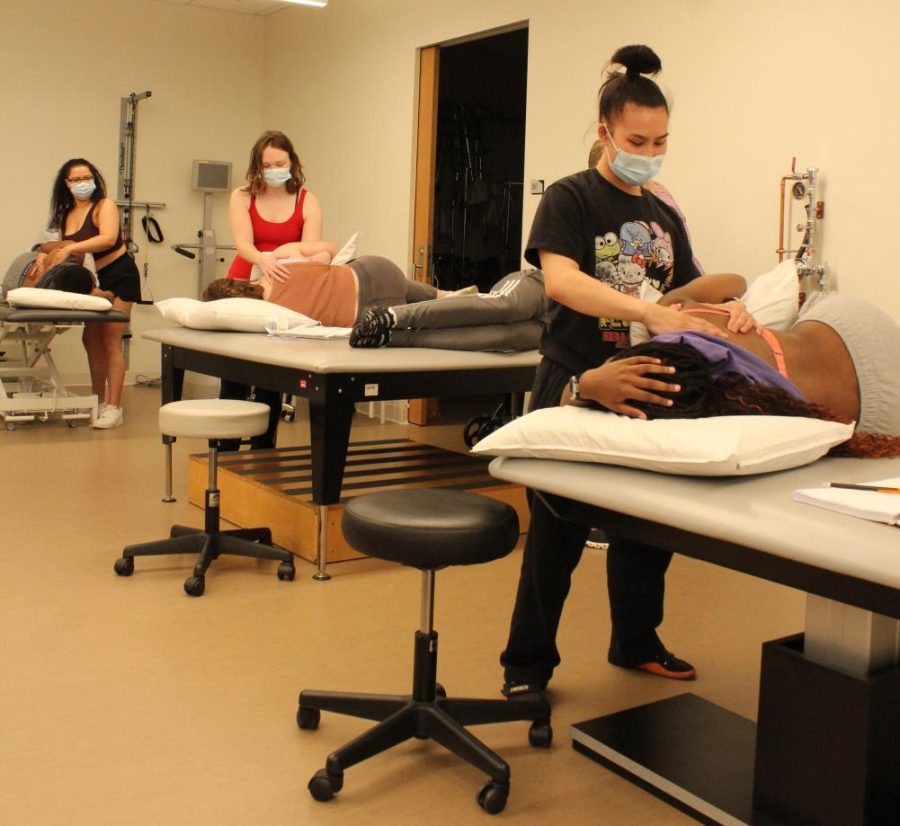PTA program marks 25 years at AACC
Students practice in a physical therapy class.
April 12, 2023
AACC’s physical therapist assistant program turned 25 this year.
The program, which started in 1998, placed No. 1 this year on College Factual’s list of the best
physical therapy assistant schools in Maryland.
“It’s actually one of the top programs in the country,” confirmed Dave Snow, who graduated from the PTA program in 2005. “When I did it, it was relatively new. So it was very easy to get into. Now, it’s much more competitive.”
Students spend five semesters working toward their associate of applied sciences degree in physical therapist assistant. The program also prepares students for the national licensing exam for physical therapist assistants.
Second-year physical therapist assistant student Diana Jiminez said the program is “very hard” and “intensive,” but added it is also “rewarding.”
“All the professors care about us learning and succeeding in the program, which I think is very hard to find,” Jiminez said. “They really provide us that one-on-one time that we need, so we feel very, like, cared for in this program.”
Patricia Brady, director of the physical therapist assistant program, said the “program is well respected in the community.”
“When we ask a hospital [to] take a student to do a clinical education course for six weeks, they say, ‘Yes, because we like your students,’” Brady said. “We like the reputation. … I think that’s been an important factor in maintaining the longevity of the program.”
Angela Bartoe, a second-year physical therapist assistant student, agreed
“I think it’s awesome … the fact that it’s been going on so long [and] how successful it’s been,” Bartoe said.
Snow, who works in orthopedics, said the program has many graduates who “have become successful.”
“I work with a lot of co-workers that came to this program,” Snow said.
Tricia Haberlein, who graduated from the physical therapist assistant program in 2015, said the program was “hard,” but gave her exactly what she “needed to be confident in the field.”
“It’s definitely not for someone that’s not sure of what they want to do,” Haberlein said. “You have to be pretty sure of what your end goal [is].”
Jimenez said the program has made her “want to come back and give back to it” by “teaching lessons” or “clinics” after graduation.












